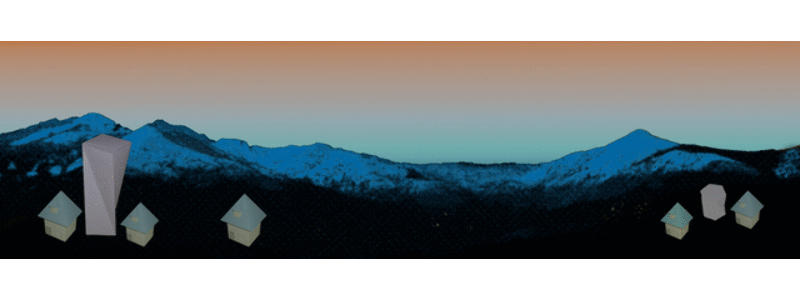Analysis of DOC Activities:
DOC paper
Organization Type:

The Washington State Department of Natural Resources works with conservation and restoration, geology, earth, aquatic and marine sciences, forestry, forest health and forest ecology, watersheds, wetlands, and reparian sciences and State Environmental Policy Act (SEPA). With this work they help to conserve and restore natural resources.
Organization Type: Government
(360) 825-1631
From the site: “The Washington Conservation Corps (WCC) is your opportunity to gain hands-on experience in the environmental field. The WCC works year-round to protect and enhance Washington’s natural resources. By becoming a WCC Member, you will work with like-minded people making a difference.”
Organization Type: Government
(360) 407-6946
The Nature Conservancy’s Washington Conservation Science Program works with public and private agencies and institutions and on ecological monitoring, research, conservation planning, and adaptive management to improve conservation.
The Nature Conservancy works on many projects in Washington. On the Washington coast they promote sustainable fisheries, work with conserving the ocean habitat, and perserving forest and rivers. On the Puget Sound they started Farming for Wildlife. Farming for Wildlife is a project to create a sustainable landscape for a agricultural community to thrive in. In Eastern Washington science projects are enacted that conserve critical forests, sage lands and waters that support life.
The Nature Conservancy has other projects in Washington that are not location based. Projects that model of the impact of climate change on Washington’s biodiversity are being researched, along with Collins Projects and conservation planning. The Collins Project is promoting choice stewardship within our agricultural community. Conservation of biodiversity is attained by identifying critical lands and waters in Washington and working to conserve those areas.
Organization Type: Non-profit Orginization
(206) 343-4345
Our Children’s Trust is a nonprofit based in Oregon.
It’s purpose, as stated on their website, is “to protect earth’s natural systems for current and future generations. We are here to empower and support youth as they stand up for their lawful inheritance: a healthy planet. We are mothers, fathers, grandparents, aunts, uncles, teachers. We are adults, part of the ruling generation, and we care about the future of our children–and their children’s children.”
We stand on the brink of human-induced climate catastrophe. We will one day have to answer to our children and grandchildren for the choices we make at this pivotal moment.
Organization Type: Not-For-Profit Organization
(541) 375-0158
Description:
This is a list of Landscape Conservation Initiatives that the USDA has implemented since 2009. These initiatives enable NRCS to more effectively address priority natural resource concerns by delivering systems of practices, primarily to the most vulnerable lands within geographic focus areas.
Through these initiatives, NRCS seeks to accomplish:
These incentives are :
Organization Type:
“To protect parks and to get awareness out about them. Also to protect the animals and the terrain like mountains and glaciers.”
This website is dedicated to protecting the landscape and species of the national parks. They also have connections to other states where they are trying to help them get the protection that they need. They also wish for people to enjoy the parks while being aware of them.
http://www.npca.org/protecting-our-parks/air-land-water/mining-and-fracking/victory_for_glacier.html (link about glaciers)
Organization Type: Conservation
Mission statement: To bring people in the Portland-Vancouver and Eugene-Springfield metro areas together to plant and care for city trees and green spaces.
“Through our Neighborhood Trees program, homeowners buy discounted trees to plant with their neighbors at weekend plantings.
Through our Green Space Initiative, trained crew leaders guide volunteers at weekend events to restore green spaces.”
Organization Type: Not-For-Profit Corporation
(503) 282-8846
The Corvallis Environmental Center is a nonprofit organization that helps educate communities, individuals both young and old, and business to operate in an environmentally friendly way. According to their mission statement:
“The Corvallis Environmental Center is a key player in the creation of a sustainable community – one in which the environment, the economy and social systems are connected in a way that meets the needs of present generations without compromising the ability of future generations to meet their own needs. As a result of these efforts, the concepts of sustainability will be widely understood and practiced by individuals and organizations, and Corvallis will be known for its commitment to an ecologically sound future.”
Based in Oregon, they work with other environmental groups to advocate sustainable lifestyles.
Organization Type:
(541) 753-9211
Mission statement: To conserve, protect and restore the environment, with a particular emphasis on the Idaho Panhandle and the Coeur d’Alene basin.
On their website it says that the Kootenai Environmental Alliance (KEA), “is the oldest non-profit conservation organization in Idaho. Our conservation mission is unchanged since the organization’s founding in 1972. We are based in Coeur d’Alene, Idaho and work throughout North Idaho”.
KEA was founded by former Idaho State Senators Art Manley and Mary Lou Reed, as well as representatives from several local and regional sporting organizations and renowned environmental attorney Scott Reed.
Organization Type: Not-For-Profit Corporation
(208) 667-9093